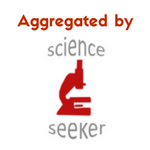The fifth Till & McCulloch Meetings started off with a bang, with an incredibly exciting and provocative talk by Dr. Sara-Jane Dunn that highlighted the predictive power of Boolean network models. Dr. Dunn, who works at Microsoft Research, introduced the idea of biological computation: a cell’s gene expression “decision making” can be modelled using Boolean logic. This makes sense, and is perhaps intuitive and easy to follow, when the state of the system can be described using a small number of inputs and outputs; however, when the number of inputs and outputs grows and interactions between them come into play, it becomes much harder to determine that the model is consistent with experimental observations.
But instead of being intimidated by the sheer size of the problem, Dr. Dunn and her team have turned this into an advantage. Typically, the more inputs and interactions that are involved in creating an output, the more difficult it is to model the system. Using Boolean expressions allows the team to focus on a much smaller subset of potential networks, and the concept of ‘Boolean satisfiability’ enables them to remove any possible models that could never explain the data. This idea is deceptively simple, but has allowed them to not only describe but also predict the behaviour of incredibly complex biological networks, including myeloid progenitor differentiation and cell reprogramming.
By focusing on experimentally-observed changes in outputs in response to specific changes in inputs, Microsoft’s Reasoning Engine for Interaction Networks (RE:IN), can find the minimal necessary feedback and feed-forward interactions that describe a system, avoiding existing very complicated networks that describe potential interactions within cells. This talk demonstrated that describing highly complex systems isn’t necessarily best done with overly complex models.
Immediately after the session ended, we were treated to yet another challenge to existing paradigms in the form of a special session led by Insoo Hyun from Case Western Reserve University. In this talk, Dr. Hyun led the audience in questioning whether existing rules/guidelines that limit the research use of human embryos to within 14 days post-conception (or alternatively, to the formation of the primitive streak) may need to be altered.
He made the case that the 14-day rule, though not perfect, was developed to give room for science to occur, while attempting to respect ethical and religious considerations. For me, one of the best moments of the talk came about when he reflected on the subject of when a soul can be said to inhabit a human. Typically, lay discussions on the topic (especially from anti-abortion activists) assert that souls are created at conception. However, until the embryo implants, splitting into two – how identical twins come to be and subsequent fusion of those two separate embryos (leading to a single embryo once again) – can still occur. If that’s the case, when is that second soul created and, if fusion occurs, where does it go?
While the session offered no answers, it was an excellent reminder that the ethical considerations of science need to be examined and evaluated frequently, to keep up with the fast-paced progress we make.
Both of these talks, as well as numerous others throughout the day, forced the audience to examine their own assumptions about their work. By shining a light on assumptions that many of us have internalized, the speakers heralded what should be a wonderfully self-reflective edition of the Till & McCulloch Meetings at Whistler this year.
Camila Londono
Latest posts by Camila Londono (see all)
- Making a case for investing in Canada revisited: Prioritizing our strengths - January 14, 2021
- Making a case for research investment in Canada: Can we drive reverse brain drain now? - January 11, 2017
- Ending on a high note – Day 3 of TMM2016 - October 31, 2016






Comments